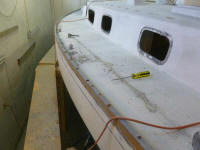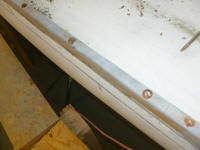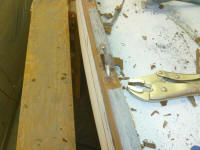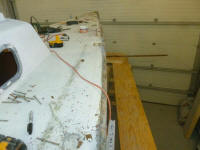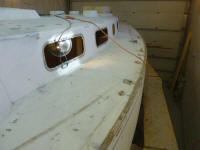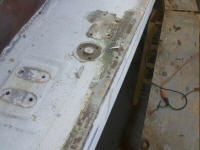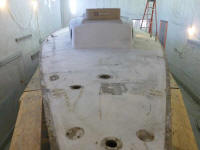
110 Cookson Lane | Whitefield, ME 04353 | 207-232-7600 | tim@lackeysailing.com
I had a situation arise in the morning that required my immediate attention, which meant that I couldn't get to work in the shop till the afternoon. I continued with the starboard toerail removal, which went fairly smoothly, though with more difficult fasteners than I'd found on the port side. But before too long, I had removed the rail in three pieces.
I continued with the final piece: the taffrail. Held in place with only about six screws, the taffrail came off with ease, revealing dusty, dried-out sealant beneath.
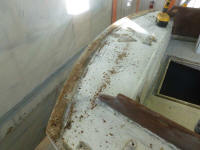

Some jobs call for a delicate touch, with care and finesse. Removing the coamings on Snow Lily was not one of those jobs. Earlier, I'd determined, much to my chagrin, that the coamings were bedded in 5200 adhesive sealant--a fine product indeed, but not intended for this application. This effectively made the coamings a permanent installation, but alas, they had to be removed.
Having already removed a short athwartships of coaming across the stern a few weeks earlier, I was prepared for what to expect, and to that end had armed myself with a sledgehammer to break away the bulk of the wooden coamings. This did not even budge the areas secured with the adhesive, but did break away all the excess wood. By removing the exposed portions of the wood, I could better attack the well-adhered remnants along the bottom edges and winch islands.
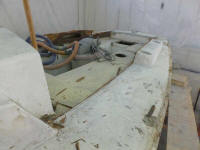
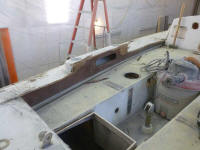
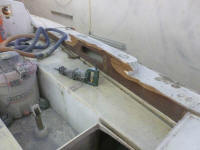
The only way to remove what remained was to chisel it away, splinter by splinter. I found that by chiseling away the bulk of the material, which was straightforward, I could then get the chisel between the wood and the fiberglass to which it was secured, and slice through the adhesive, taking all but a thin layer that remained behind. Effective enough, but slow going. I also found that the ends of the coamings were set in recessed areas in the deck and forward coaming block, which recesses were filled with adhesive.
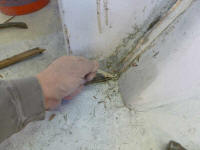

I left the screws and bolts for later removal, as many of the nuts were inaccessible. After removing 2/3 of the starboard coaming in this way, my chisel was dull dull dull, and since it was near the end of the day I decided I'd reached a good stopping point.
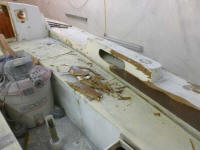
Total Time on This Job Today: 4.5 hours
